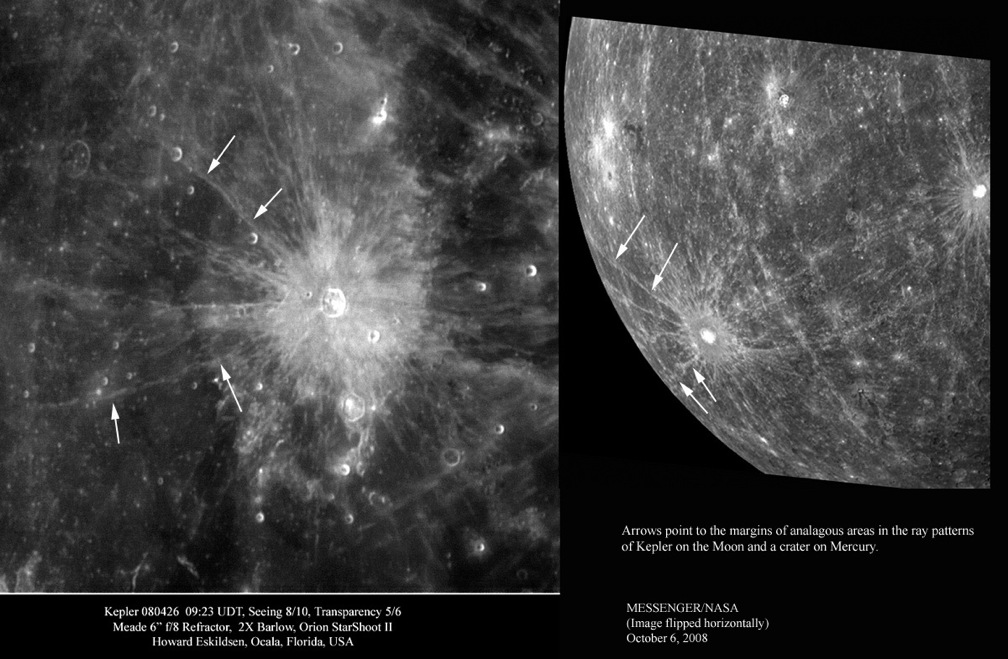March 6, 2018
Look-Alikes
Originally published October 9, 2008

left image by Howard Eskildsen, Florida, and right image from Messenger spacecraft, Mercury
The Mercury crater at the bottom left in yesterday's LPOD seemed familiar to Howard. His composite image above shows why - the unnamed mercurian crater has rays and a broad halo of brightness similar to those of the lunar crater Kepler. Probably all crater formation events propel rays of ejecta across their planet's surface, but no one has closely studied the details of ray pattern morphology. Actually, Gene Shoemaker did back in the late 1950s when he mapped and analyzed the ejecta from Copernicus, but I am not aware of any other crater's rays being studied so carefully, and certainly there isn't an explanation (or even a classification) of different ray patterns. Looking at the two featured ray patterns here we see that both have four or five broad rays on one side of their parent craters, and narrower and less distinct rays in other directions. Possibly both craters result from oblique impacts, but that is such a common excuse/explanation for unequal distribution of rays I wonder if there may be other overlooked contributing reasons? What do you think?
Chuck Wood
Related Links
Rükl plate 30
More dramatic new images were posted on the Messenger website on Wednesday.
Yesterday's LPOD: The Beginning
Tomorrow's LPOD: The Left Side of Hell
COMMENTS?
Register, Log in, and join in the comments.



